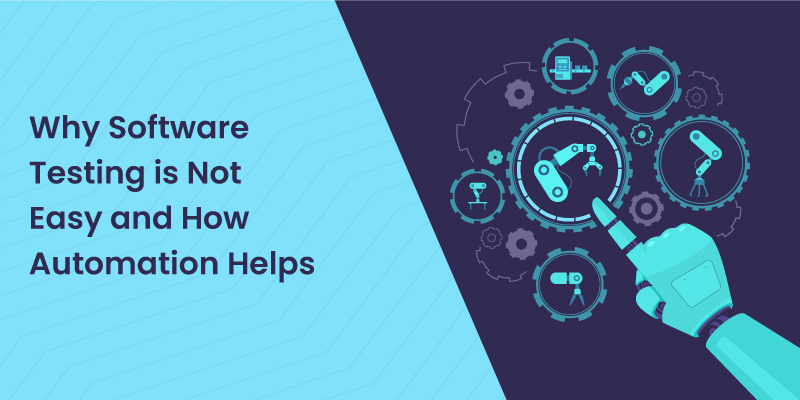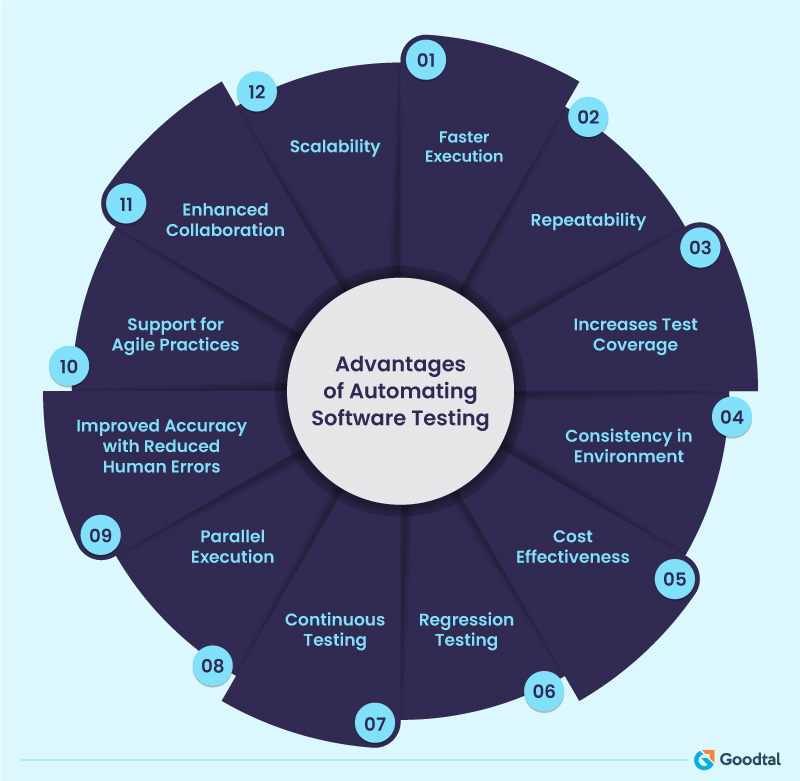
It is not important to write blogs to prove or emphasize the role of software testing companies in delivering a successful product. Over the last decade, businesses have understood that high-quality software testing, irrespective of the costs, is more than necessary. However, not all can perceive that effective software testing can be really challenging!
Challenges in Software Testing
Let’s take a quick look at the challenges in software testing.
Incomplete Requirements and Changing Requirements
To get the most out of software testing, the testing requirements must be communicated clearly and comprehensively. This includes clarifying the categories of users, namely, age, level of education, gender, and a lot more. Most of the time, when the requirements are not clear or clearly communicated to the testing professionals, even the best testing services fail to deliver the desired results.
The problem doesn’t end at requirements clarity. The software requirements keep changing, and these changes demand a change in testing requirements. Software testing requirements change primarily due to the following reasons.

Resource Constraints
Software budgets are generally an issue, and no matter how well you have planned, the contingencies force you to modify these budgets. There is not always too much scope for adding budgets freely. This puts software testing under the burden of resource constraints.
Software testing tools and skilled professionals are anyway in shortage. For example, professionals with expertise in Selenium Testing may not always be equally good at using Microsoft Test Manager.
Shortage of resources can be managed by proper resource utilization and planned optimization. We should also plan for contingencies and keep budgets flexible for changing resource needs.
Time Constraints
Even the best software developers are aware of the time constraints faced while developing software. It is not due to lack of experience, but as we follow agile software development and testing practices, there are always unexpected problems. A lot of time is spent on software testing and managing unexpected testing needs.
Complex and Varied Software
Technology changes are leading to an increase in the complexity of software. As the software is becoming advanced and varied with different technologies, the testing needs also become very complex. Fully addressing such complex software testing needs is a challenging task. However, expertise, experience, and proficiency in handling the best software testing tools empower the top software testing companies to take up such challenges and deliver a perfect product that is sure to be successful.
Suggested Reading: Best Tools for Software Testing & Quality Assurance
Integration Problems
As we are talking about advancement in technology, we cannot ignore the problems in integrating the tools and resources essential for implementing such technology. Software testers commonly face challenges in integration and there is not much that they can do about it. Apart from that, such integrations can cause disruptions during upgrades. Experience in this domain can reduce some part of the problem, but not eliminate it completely.
Data Management
Software Testing, especially in large or complex applications, requires managing huge volumes of data. Data management is a big task and a challenge that can’t be ignored by software testing companies. Advanced technology, tools, and cloud testing solutions have made the problem less severe and we expect these issues will be tackled in the near future.
Lack of Test Environments
Production environments are more comprehensive and vast compared to test environments. Relevant experience adds the capability to plan for most expected environments and their constraints, it is difficult to have sufficient test environments to mirror the production environment completely. This can affect performance and stability.
Test Environment Stability
As we know, software development is agile, and with continuous testing, it is possible and necessary to change the test environments based on changes in testing requirements. However, instability or frequent changes in the test environment can affect the performance of testing causing unreliable results.
Security Testing Complexity
Security is a crucial domain for software testing. Identification and correction of issues are the two levels of security testing. It is not as simple as it sounds and requires expertise and relevant tools to get effective outcomes. Even if you have access to some tools, these may not turn out to be perfect for your needs, depending on the complexity of the application.
Moreover, it requires knowledge and experience with a variety of tools such as Microsoft Test Manager and Apache JMeter to manage the hassles and complexity of software testing. It further involves the ability to select the best tool specific to your needs.
User Experience Testing
As businesses have realized the importance of user experience, user experience testing has become integral to effective software testing. However, as users have varied preferences, it requires subjective evaluation to offer user experiences that impress all types of users. You can imagine the amount of time, effort, and resources that software testing agencies would require to address user experience testing effectively.
The Solution!
So, this was about the challenges! As with other fields, software testing is also adopting automation like never before to mitigate the challenges posed by manual processes in complex applications.
Why Automation in Testing?
Automation is taking over major technological processes. Software testing needs have existed from the beginning of the testing concept, but there was always a need for simpler, quicker, and more efficient processes. Moreover, software testing is becoming highly complex and it is not possible to manage the complexity manually. Automation is the solution to many problems in software testing. Here are the major advantages of automating software testing.

Software testing is achieving huge milestones with automation. Tasks that used to take days can now be managed in very less time. Moreover, it eliminates human errors and helps maintain uniformity without biases.
Due to all the benefits that it offers, automation in testing is increasingly being adopted and continuous testing at all levels is becoming a new norm. However, irrespective of the pros, testing automation is not devoid of challenges.
Challenges in Automation of Software Testing
Let’s look at the challenges in the automation of software testing.
Cross-Platform Testing
Like cross-platform development, cross-browser and cross-platform testing is also a challenge overall, be it in manual testing or automated. Most advanced tools can help manage this problem easily.
Parallel Execution of Tests
Parallel execution of tests is the need of the hour given the continuous testing concept and modern methodologies in software development. Automated testing has increased the adoption of parallel testing as it can carry on at different stages and fragments together, without manual intervention. But, is it all that simple? No, there are numerous challenges in parallel execution of tests in automated testing.
Suggested Reading: Are You Keeping Up With the Emerging Trends in Software Testing?
Complexity of the Software
Though automated testing is replacing manual testing, and we are configuring our systems to suit automated testing, sometimes the software complexity can force the requirement of manual testing along with automated testing. It is a challenge to balance both of these while maintaining the quality of end results.
Selection of Tools
The success of every automated process largely depends on effective selection and use of the tools and technology. So many options are available in the market, making the selection more difficult. Every vendor claims his tools to be the best, and only the best software testing experts can decide, after experiencing, which tool matches the needs of the project.
User Interfaces
Manual testers deal with different scenarios and user interfaces separately. In automated testing, dynamic User Interfaces require regular script updates. So, it becomes time and resource-intensive when the project is big and complex.
Data Bulk
We know that manual testing can’t handle bulk data effectively. However, automation in software testing has only reduced the problem and not eliminated it completely. So, provisions have to be made to clean up or handle such data at relevant stages to prevent any disruptions. Similarly, data privacy and security also become a serious issue to manage.
Requirement of Regular Upgrade
Test scripts need to be persistently upgraded and maintained due to changes in the features and functionality of the software. When testing is automated testers must ensure that the system is capable of managing such issues.
Wrapping Up!
Over the years, with software development becoming more complex, software testing has also reached advanced levels of complexity. This blog suggests that we must prepare for software testing challenges to ensure success in this field. It also focuses on Automation in software testing, and how this can solve most of the problems faced in software testing. This also involves the selection and use of the best tools for software testing. Businesses looking for experts in Selenium, Microsoft Test Manager, and Apache JMeter can find the best in this domain through the ready lists from Goodtal.
